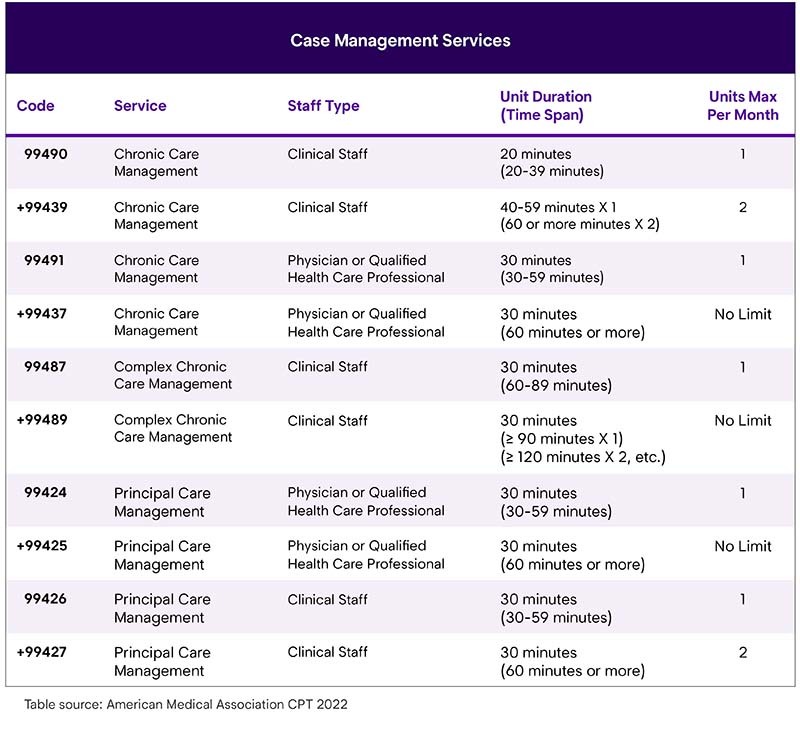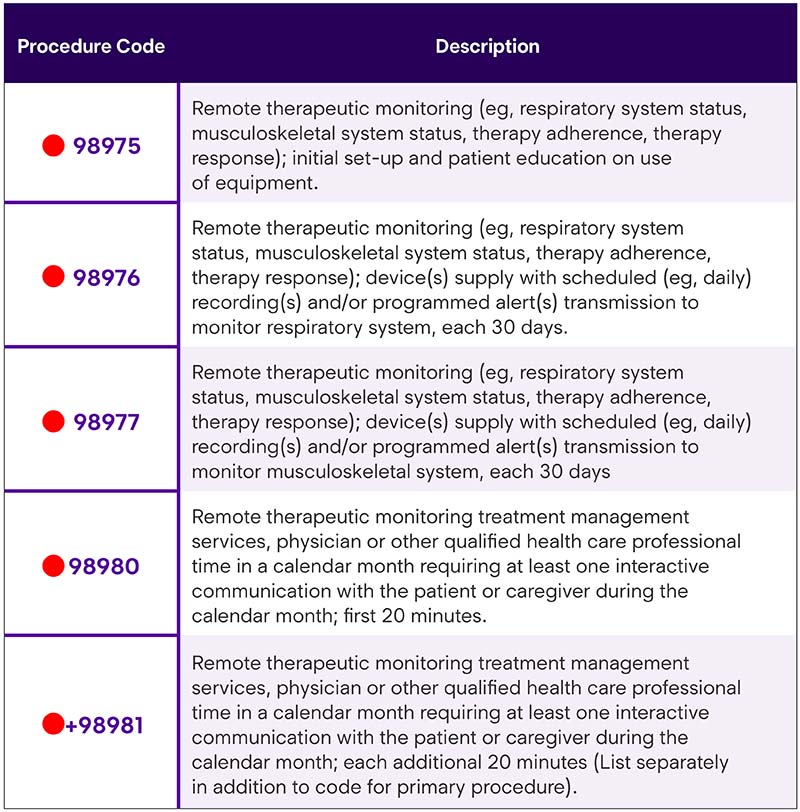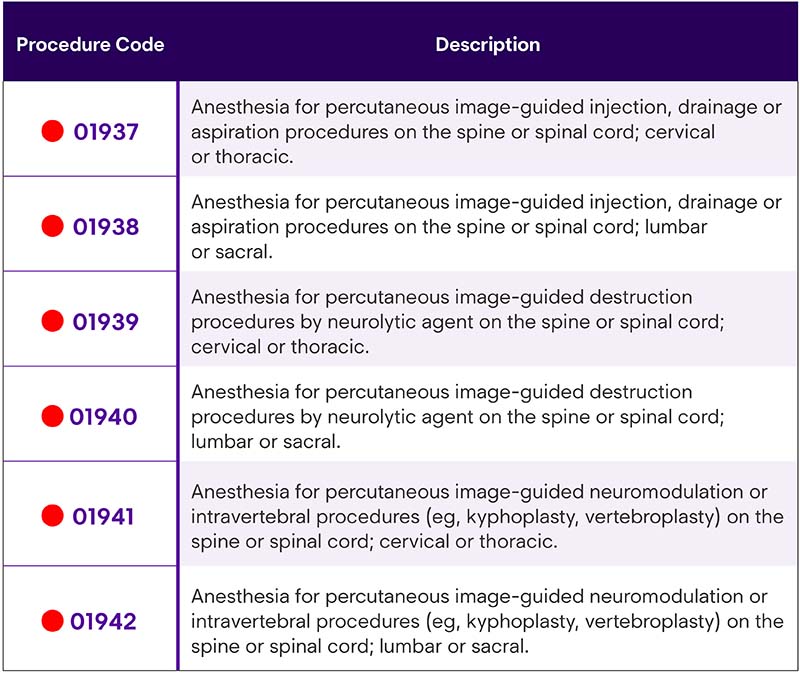CPT Copyright 2021 American Medical Association. All rights reserved.
CPT® is a registered trademark of the American Medical Association.
It's that time of year again! The American Medical Association (AMA) recently updated its CPT® codes. The most significant changes in the 2022 code set include:
- Care Management CPT Codes
- Digital Medicine CPT Codes
- Anesthesia for Percutaneous Image-Guided Spinal Procedures
- Summary of the 2022 CPT Code Updates
Let’s take a closer look at these changes and what they mean for the workers’ compensation and auto casualty industries.
Care Management CPT Codes
As healthcare systems across the U.S. strive to treat patient populations while keeping health risks and healthcare costs low, care management has emerged as a useful tool. Care management, which is based on the principle that intervening with individuals from certain populations will reduce health risks and decrease the cost of care, is a team-based, patient-centered approach to assist patients and their support systems in managing medical conditions more effectively. Care management also encompasses care coordination activities required to help manage chronic illness (AHRQ, 2018).
Progression of Code Development
Care Management codes were first introduced by the AMA in 2013, when they added the transitional care management code set. As health care has continued to evolve over the years, the AMA has continuously refined and added codes to report various Care Management services. See the chart below to better understand the progression of these codes over the years.

In 2022, the AMA added four new CPT codes to report Principal Care Management services, created an add-on code for CPT Code 99491 and revised existing procedure codes.
In order to fully grasp the addition of the new Principal Care Management codes, it is vital to first understand the three care management paths.
- Chronic Care addresses multiple (two or more) chronic conditions expected to last at least 12 months, performed either by (a) the clinical staff directed by a physician or other qualified healthcare professional (QHP) or (b) by the physician or a QHP.
- Complex Chronic Care addresses multiple (two or more) moderate or highly complex chronic conditions expected to last at least 12 months, performed by clinical staff directed by a physician or other qualified healthcare professional.
- Principal Care address one single high-risk, complex chronic condition expected to last at least three months, performed either by (a) the clinical staff directed by a physician or other qualified healthcare professional (QHP) or (b) by the physician or a QHP.
These services are mutually exclusive and should not be reported together during the same calendar month, noted throughout the parenthetical guidelines in the CPT 2022 Manual.
Procedure Code Description Changes

Care Management Services Table
Per a comment made at the 2022 CPT Symposium, the chosen care management path determines the code assignment. The AMA provided a table outlining the codes, service, staff type, unit duration, maximum monthly units to assist in code selection (AMA, 2021).

Digital Medicine CPT Codes
Like Care management, digital medicine continues to evolve, and thus, the AMA introduced a new CPT code section this year to report remote monitoring of non-physiological parameters.
Remote Therapeutic Monitoring
Unlike Remote Physiologic Monitoring (RPM), which measures a physiological parameter, such as heart rate, weight and glucose levels, Remote Therapeutic Monitoring (RTM) reviews data related to therapeutic responses, including signs, symptoms, and functions. RTM devices must be ordered by a physician and FDA approved. Additionally, RTM services are mutually exclusive to RPM services (Kanter, 2021).
Remote Therapeutic Monitoring Treatment Management Service
Remote Therapeutic Monitoring Treatment Management Service (RTMTM) utilizes RTM results to manage patients under a specific treatment plan, requiring at least one interaction with a patient or caregiver. Providers can report RTMTM and Care Management services together, but the time is separate. The guidelines state to report new code 98980 once, regardless of the number of therapeutic monitoring modalities performed in a calendar month (Kanter, 2021).
New Procedure Codes

Anesthesia for Percutaneous Image-Guided Spinal Procedures
In 2022, the AMA also introduced a new family of anesthesia codes.
Prior Anesthesia Codes
The AMA Editorial Panel noted prior CPT codes 01935 (Anesthesia for percutaneous image-guided procedures on the spine and spinal cord; diagnostic) and 01936 (Anesthesia for percutaneous image-guided procedures on the spine and spinal cord; therapeutic) were reported inappropriately with other services. Furthermore, the panel concluded that there is no need for separate diagnostic and therapeutic codes— the anesthesia work was the same (Vorenkamp, 2021).
New Family of Codes
In the 2022 update, the Editorial Panel created a new family of codes, placing them in three categories sorted by type of service and body site. According to the presentation at the 2022 CPT Symposium, new codes 01937 and 01938 are considered “diagnostic.”

New Procedure Codes

Summary of 2022 CPT Code Changes
- New Principal Care Management codes should be used for a single complex condition.
- CPT code selection for care management is dependent on the path chosen for treatment.
- Parameters for Remote Therapeutic Monitoring are based on response to a therapeutic treatment.
- Remote Therapeutic Monitoring and Remote Physiological Monitoring are mutually exclusive.
- Anesthesia for percutaneous image-guidance spinal procedures are now by type of service and body site.
References


